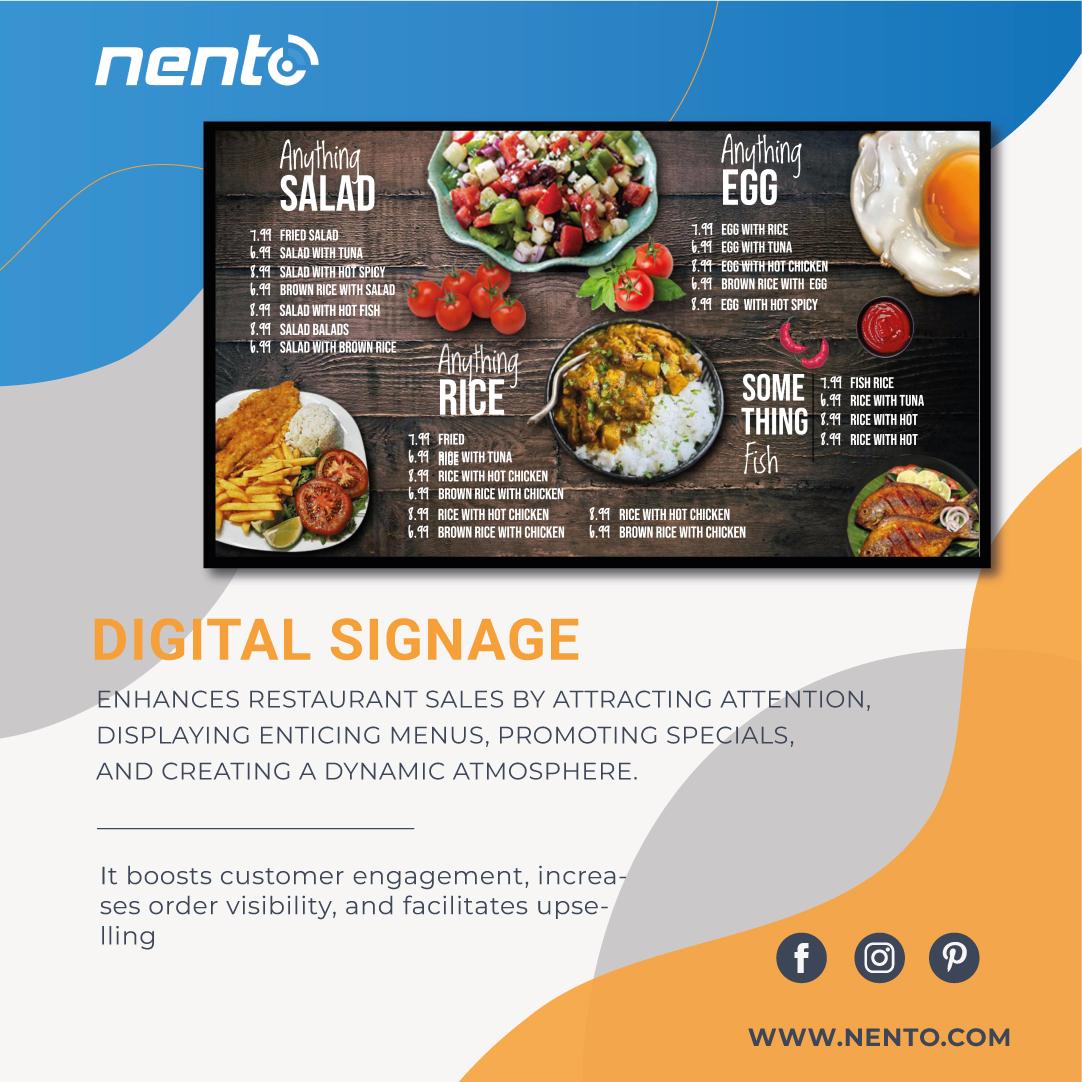In the competitive restaurant industry, standing out is essential to attract more customers and boost sales. One of the most effective ways to do this is by leveraging digital signage templates. These templates, when used correctly, can create visually appealing and informative displays that capture attention and encourage customers to make a purchase. In this guide, we'll explore how to use restaurant digital signage templates effectively and how digital signage software plays a critical role in this process.
Why Digital Signage Templates Matter
Digital signage templates offer a streamlined way to create engaging content without the need for extensive design skills. They are pre-designed layouts that you can customize with your own text, images, and branding. By using templates, you ensure that your signage is professional-looking, consistent, and on-brand.
For restaurants, digital signage can transform the way menus are presented, promotions are advertised, and customer experiences are shaped. With the right template, you can communicate key information in a clear and attractive way, drawing in customers and encouraging them to order more.
Choosing the Right Digital Signage Template
Selecting the right digital signage template is the first step to success. Here are some factors to consider:
-
Theme and Design: Choose a template that matches your restaurant's theme and branding. For instance, a rustic-themed restaurant might opt for a template with earthy tones and simple, elegant fonts, while a modern, fast-casual eatery could choose a sleek, minimalist design.
-
Layout: The layout should be intuitive and easy to read. Important information, such as menu items and prices, should be prominently displayed. Consider templates that allow for high-quality images of your dishes, as visuals are key to tempting customers.
-
Flexibility: Look for templates that are customizable. You should be able to easily update menu items, prices, and promotions. Flexibility is crucial, especially if your restaurant frequently changes its offerings.
-
Customer Journey: Consider how the template fits into the customer journey. For example, if the signage is located at the entrance, the template should be welcoming and provide a quick overview of what customers can expect. If it's at the counter, it should highlight daily specials or popular items.
Customizing Digital Signage Templates
Once you've chosen a template, the next step is customization. Here's how you can tailor digital signage templates to attract more customers:
-
Incorporate High-Quality Images: Images are powerful tools in digital signage. Use high-resolution photos of your most popular dishes to entice customers. Ensure the images are well-lit and appetizing. Most digital signage software allows you to easily upload and position images within your template.
-
Use Compelling Text: Your text should be clear, concise, and persuasive. Highlight key selling points like special ingredients, discounts, or time-limited offers. Use a hierarchy in your text to guide customers' attention, with the most important information in larger, bolder fonts.
-
Stay On-Brand: Your digital signage should reflect your restaurant's branding. Use colors, fonts, and logos that align with your overall brand identity. Consistent branding helps build recognition and trust with customers.
-
Leverage Dynamic Content: Many digital signage templates support dynamic content, such as videos, animations, or rotating slides. Use these features to create more engaging displays. For instance, you can showcase a video of a chef preparing a signature dish or use animations to highlight a daily special.
-
Update Regularly: Keep your content fresh by regularly updating your digital signage. This could mean changing the menu to reflect seasonal dishes, promoting new items, or highlighting upcoming events. Frequent updates show that your restaurant is active and engaged with its customers.
Utilizing Digital Signage Software
To get the most out of your digital signage templates, you need the right digital signage software. This software is the backbone of your signage system, allowing you to design, schedule, and manage your content. Here’s how it supports your efforts:
-
Ease of Use: Good digital signage software should be user-friendly, even for those without a design background. It should offer drag-and-drop functionality, making it easy to customize templates and create new content.
-
Content Management: The software should allow you to manage multiple signs and displays from one central location. This is especially useful if you have multiple restaurant locations or want to display different content at different times of the day.
-
Scheduling: Digital signage software often includes scheduling features, enabling you to set specific times for different content to be displayed. For example, you can promote breakfast items in the morning and switch to lunch specials later in the day.
-
Analytics: Some digital signage software offers analytics features that track how customers interact with your signage. This data can help you refine your content and make more informed decisions about what to display.
-
Integration: The software should integrate with other systems in your restaurant, such as point-of-sale systems or inventory management. This allows for real-time updates, such as automatically removing sold-out items from the digital menu.
Conclusion
Using restaurant digital signage templates effectively can be a game-changer in attracting more customers. By choosing the right template, customizing it to reflect your brand and offerings, and leveraging the power of digital signage software, you can create compelling displays that not only catch the eye but also drive sales. In a crowded market, where every customer counts, investing in high-quality digital signage is an investment in your restaurant's success.

